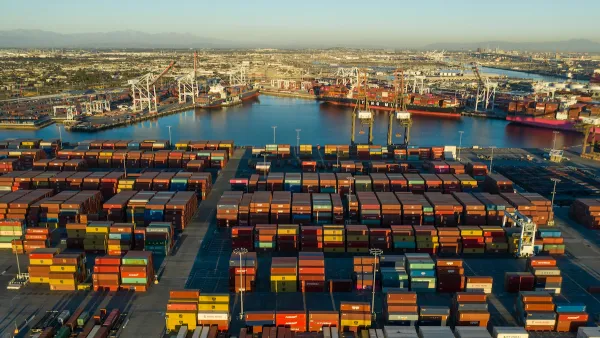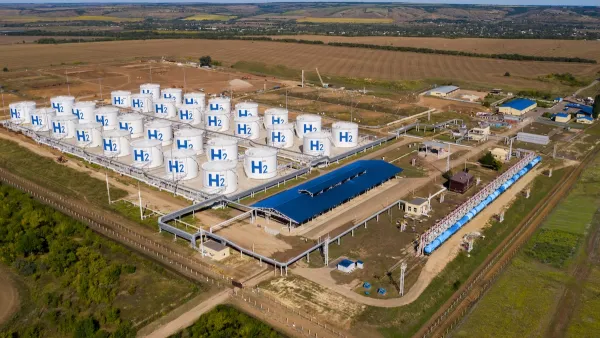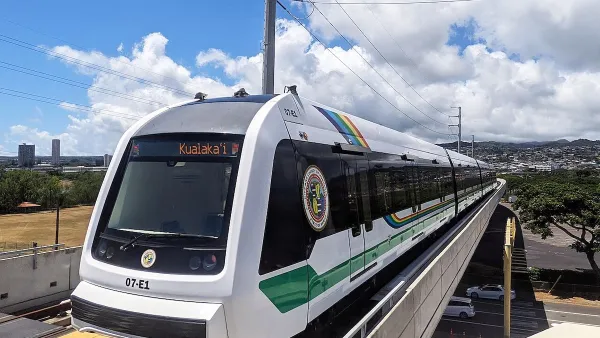Philip Bump contemplates a future in which Arctic Ocean trade routes give rise to thriving port cities dotting the northern coasts of North America and Eurasia alike.
Completed nearly a century ago, in what was arguably the most ambitious feat of engineering in human history, the Panama Canal opened the way for a new era of faster, better-connected global trade. Are trade routes across the Arctic Ocean next?
Major General Francis G. Mahon of the U.S. Northern Command says it's only a matter of time. “There are many, many others who have economic interests who would like to harvest [resources in the Arctic] and sell them on the economic market," he said at a panel discussion in the nation's capital last weekend. When trade between China and Europe stands to cut 40 percent off of existing routes through Panama or around Cape Horn, “From an economic standpoint, you know that will be exploited as quickly as possible.”
Writes Bump, "The northern coast of Canada is already dotted with small settlements. Imagine the growth of massive ports, connected by railroad to airports or cities or other commercial infrastructure. Imagine the Hudson Bay ringed with city after city offshoring huge container ships and tankers. Imagine a 'real coast,' the rush to build it out."
But there are complications that stand in the way of the move to build out trade infrastructure in the north. For one, settlements there depend on permafrost, and buildings and roads in the Yukon have collapsed with rising temperatures. In addition, "container ships and other large vessels draw a lot of water, requiring dredged shipping lanes and certain water depths. But the melting Arctic ice will occur at the same time as significant rise in sea levels, which could potentially shift which areas are most suitable for shipping. It also means that all of the standard building-on-the-coast caveats apply."
Of course, if it were that simple, it would have happened ages ago. But the thawing of the Arctic may make it feasible before too long.
FULL STORY: World superpowers are about to get a brand new coast

Analysis: Cybertruck Fatality Rate Far Exceeds That of Ford Pinto
The Tesla Cybertruck was recalled seven times last year.

National Parks Layoffs Will Cause Communities to Lose Billions
Thousands of essential park workers were laid off this week, just before the busy spring break season.

Retro-silient?: America’s First “Eco-burb,” The Woodlands Turns 50
A master-planned community north of Houston offers lessons on green infrastructure and resilient design, but falls short of its founder’s lofty affordability and walkability goals.

Test News Post 1
This is a summary

Analysis: Cybertruck Fatality Rate Far Exceeds That of Ford Pinto
The Tesla Cybertruck was recalled seven times last year.

Test News Headline 46
Test for the image on the front page.
Urban Design for Planners 1: Software Tools
This six-course series explores essential urban design concepts using open source software and equips planners with the tools they need to participate fully in the urban design process.
Planning for Universal Design
Learn the tools for implementing Universal Design in planning regulations.
EMC Planning Group, Inc.
Planetizen
Planetizen
Mpact (formerly Rail~Volution)
Great Falls Development Authority, Inc.
HUDs Office of Policy Development and Research
NYU Wagner Graduate School of Public Service




























